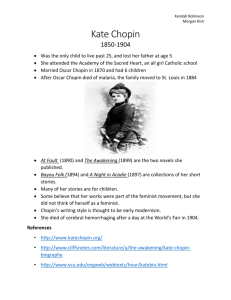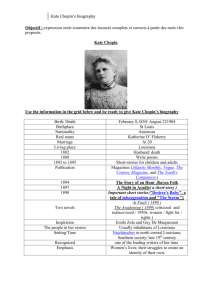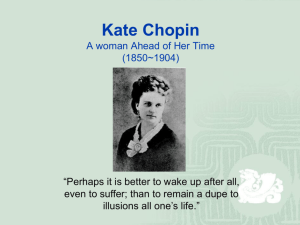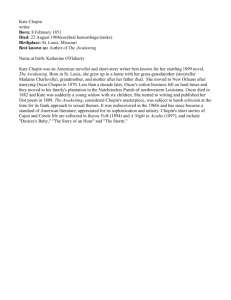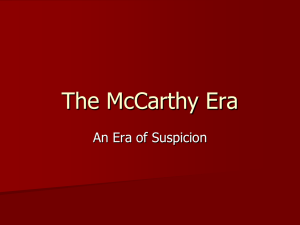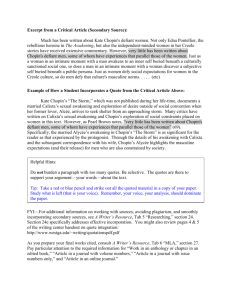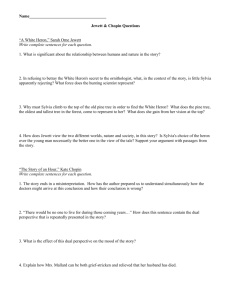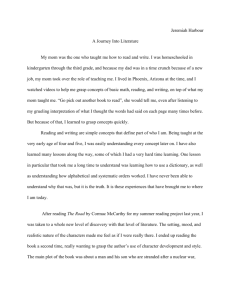Road vs. The Storm Themes
advertisement
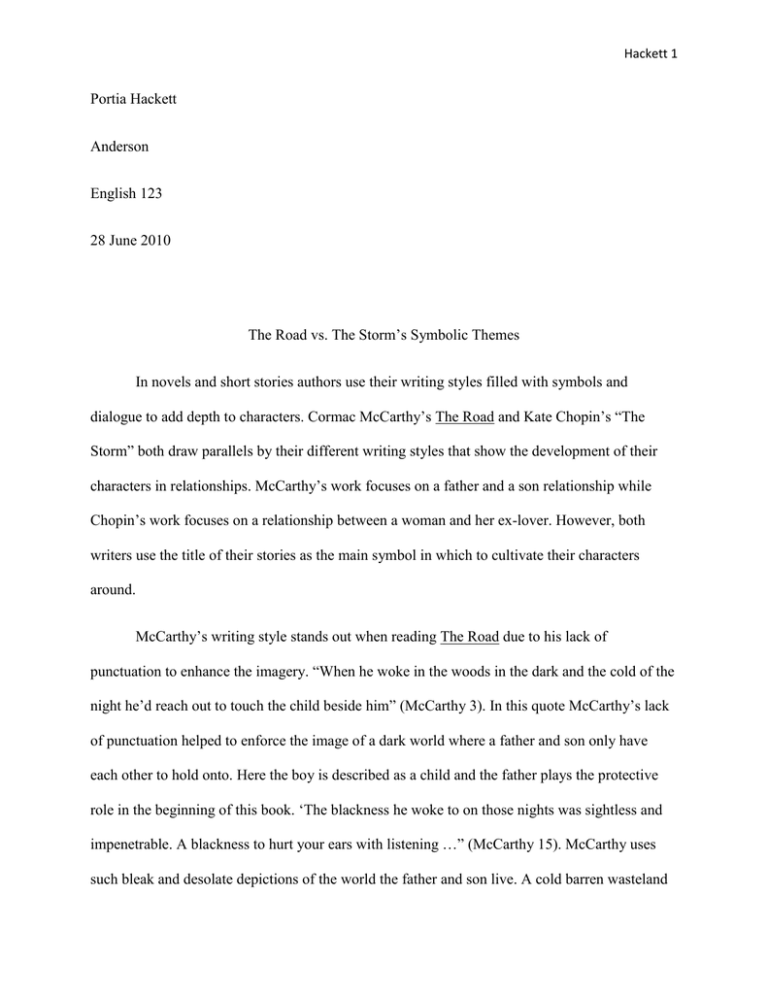
Hackett 1 Portia Hackett Anderson English 123 28 June 2010 The Road vs. The Storm’s Symbolic Themes In novels and short stories authors use their writing styles filled with symbols and dialogue to add depth to characters. Cormac McCarthy’s The Road and Kate Chopin’s “The Storm” both draw parallels by their different writing styles that show the development of their characters in relationships. McCarthy’s work focuses on a father and a son relationship while Chopin’s work focuses on a relationship between a woman and her ex-lover. However, both writers use the title of their stories as the main symbol in which to cultivate their characters around. McCarthy’s writing style stands out when reading The Road due to his lack of punctuation to enhance the imagery. “When he woke in the woods in the dark and the cold of the night he’d reach out to touch the child beside him” (McCarthy 3). In this quote McCarthy’s lack of punctuation helped to enforce the image of a dark world where a father and son only have each other to hold onto. Here the boy is described as a child and the father plays the protective role in the beginning of this book. ‘The blackness he woke to on those nights was sightless and impenetrable. A blackness to hurt your ears with listening …” (McCarthy 15). McCarthy uses such bleak and desolate depictions of the world the father and son live. A cold barren wasteland Hackett 2 is an apt way to describe this place. This world seems to have no light where those who live, live in darkness. Imagine a world without hope covered in darkness where a father and son rely on each other to survive. This is the image McCarthy gives his readers with his writing style in order to augment a visual of this created world. “The Storm” by Kate Chopin is written in a different writing style than McCarthy’s work. Chopin’s writing concentrates on her use of imagery and parallel sentence structure. “Calixta, at home, felt no uneasiness for their safety. She sat at a side window sewing furiously on a sewing machine. She was greatly occupied and did not notice the approaching storm” (Chopin 38). In this quote Chopin centers on Calixta, wife of Bibinôt, who is portrayed as a hard-working housewife. She adds complexity to Calixta’s character when she writes “Alcée Laballière rode in at the gate. She had not seen him very often since her marriage, and never alone” (Chopin 38). An emphasis on Laballière is given in this quote because he is depicted as man she had not seen alone since her marriage. The quote suggests that Laballière was a past lover before she married. “The Storm” was written in the late 19th century and a woman meeting her ex-lover, even on the night of a storm, was not commonplace for a married woman. “Come ‘long in M’sieur Alcée.’ His voice and her own startled her as if from a trace, and she seized Bibinôt’s vest” (Chopin 39). Suddenly, Calixta is taken from being an ideal housewife to a woman with a secret. Chopin uses imagery and parallel sentence structures to add complexity and depth to her characters. Chopin and McCarthy both stress the importance of their titles as a symbolic theme throughout their stories. McCarthy constantly refers to the road in his work by his character’s mentioning or looking down the road. “The boy looked away down the road. I want you to tell me. It’s ok. He shook his head” (McCarthy 128). McCarthy uses the road to map out his characters as they progress and the roles change. Earlier in the novel the father is counting the Hackett 3 sons heartbeats but near the end the son counts the fathers heartbeats. Chopin uses the storm as a symbol to parallel between Calixta’s feelings for Alcee when she mentions Calixta’s “red and moist lips” (40). The Storm surges and so does Calixta’s desire rage. Works Cited Chopin, Kate. "The Storm." The Hudson Book of Fiction: 30 Stories worth Reading. Boston: McGrawHill, 2002. 38-42. Print. McCarthy, Cormac. The Road. New York: Vintage, 2006. Print. Hackett 4
